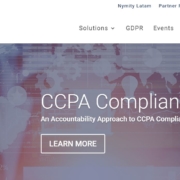Understanding the emerging world of ‘fake everything’ is vital for figuring out what you and your company can do about it.
30 September, 2017 21:00
“Information wants to be free.”
That was the motto of truth-seeking digital activists in the ’80s and ’90s.
The motto today is: “Information wants to be fake.”
Facebook, Twitter and Google are being dragged before Congress to tell what they know about fake news, trolling and propaganda funded by the Russian government on those social networks.
It appears that the Russian government bought hundreds of thousands of dollars in advertising on Facebook and Twitter aimed primarily at exacerbating existing social and political conflict within the United States. It also appeared to have maintained fake user accounts designed to influence voters in key swing states leading up to the presidential election.
The activity, however, isn’t just an election-cycle phenomenon. It continues.
Senator James Lankford (R-Okla.) pointed out this week that Russian troll farms are stoking both sides of the debate over NFL players protesting during games, urging Americans to join kneeling players in protest, and also to boycott the NFL over kneeling players.
One recent tweet on a Twitter account called “Boston Antifa” came from a poster who apparently forgot to remove the location stamp. The location wasn’t Boston, but Vladivostok, Russia.
Such is the nature of our age that some said even the time stamp may have been faked to smear Russia.
Nobody knows what’s true.
Buzzfeed reported this week on the rising readership of content farms based overseas in places such as the Philippines, Pakistan and Macedonia. Such “publications” exist solely for profit. They don’t care what’s true. They just care what goes viral.
The article points out that genuine publications by Native Americans about Native American matters are being driven out of business by online “Native American” news sites based in Kosovo and Vietnam. These foreign sites make their money in part by selling merchandise based on images stolen from actual Native American artists.
Fake online information by its very nature either degrades or exploits trusted sources of information.
The president of the United States, for example, has reportedly quoted bots — fake humans with fake accounts — on Twitter at least 152 times. The president himself is often the source of false information.
Fake information goes beyond false news published as truth. Brand counterfeiting also presents threats to enterprises.
LEGO sets sold in China are often fake — not made by LEGO. But a counterfeit LEGO set recently went too far with ISIS themes, with one set including a plastic decapitated head.
The world’s consumer markets are flooded with everything from fake honey to fake sneakers.
Google recently announced refunds to advertisers over fake traffic.
Some fake-information sources benefit from the existence of trusted sources of information. Because you trust a source, they can cause mayhem by using your trust to socially engineer you into doing something.
Hackers hide malicious code inside fake security updates. If you believe it’s an authorized security update, you’ll install unknown code on your system or network.
A fake law firm recently convinced Amazon to remove a product, costing the seller some $200,000.
You can’t even trust people selling adorable puppies. Up to 80% of online ads for puppies are fake, according to the Better Business Bureau.
Fake news is such a “thing” that Dictionary.com is even adding an entry for it in its next update.
What’s driving the rise in fake information
The rise of false information online is caused by five factors:
1. The Internet allows anyone anywhere to publish anything everywhere.
2. Digital content is easy to counterfeit or modify.
3. Many people have powerful incentives to spread false information.
4. It’s easier for social network algorithms to favor emotionally reactive content than true content.
5. The public increasingly relies upon digital internet content for “knowledge.”
Facebook, Twitter and Google claim that they’re taking active measures against the rise of fake information. But previous efforts have failed.
The reality is that fake information will continue to be spread online. And that could be a problem for you and your company.
Consider a recent report in the Financial Times about a “Chinese edition” of The Wall Street Journal. The site copied the look and feel of the Journal’s legitimate website, and used the Journal’s reputation to attract Chinese-speaking intellectuals globally. The articles themselves were copied from China’s state-run Xinhua news agency, which is supervised by the Chinese Communist Party’s propaganda arm.
The Wall Street Journal’s hard-won reputation was being used as a spoonful of sugar to help the propaganda go down.
Here’s the bad part: The Journal wasn’t even aware of the fake site until contacted about it by a reporter.
What can be done about fake information?
It’s time for enterprises of all kinds to come to terms with the new reality of fake information online. The worse the fake information problem gets online, the more valuable trusted sources of information become.
The most important action is to make sure you, your department and your company are purveyors of factual information in marketing and in all business communication. It’s important to understand that the role of a brand as a trusted source of information is more important than ever. Aggressively seek out fake information falsely attributed to your company, and do all you can to stop it from happening.
Don’t fall into the nothing-has-really-changed complacency of believing that today’s fake-news problem is comparable to yesterday’s. Fake information is different now because it’s computer-assisted, global and massively crowdsourced. Fake news is a tech problem.
Boycott the companies, including the social networks, that are acting as part of the problem, rather than part of the solution.
Support the companies that fight for facts, including media publishing companies. You can do this with advertising dollars, subscriptions and other forms of support.
Pressure the government to crack down on fake sources of information.
Fake news is bad for business. And it’s everybody’s problem. The solution starts with you and your company.











